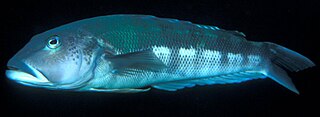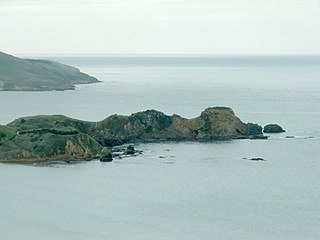Katiki is a small settlement in North Otago, New Zealand. It lies between the townships of Palmerston and Hampden on State Highway 1 at the northern end of Katiki Beach, close to the Moeraki Peninsula. The tip of the peninsula, Katiki Point, is the site of Katiki Point Lighthouse. The scenic reserve of Trotter's Gorge is located just inland of Katiki.

The district of North Otago in New Zealand covers the area of Otago between Shag Point and the Waitaki River, and extends inland to the west as far as the village of Omarama.

The town of Palmerston, in New Zealand's South Island, lies 50 kilometres to the north of the city of Dunedin. It is the largest town in the Waihemo Ward of the Waitaki District, with a population of 890 residents. Palmerston grew at a major road junction: State Highway 1 links Dunedin and Waikouaiti to the south with Oamaru and Christchurch to the north, while State Highway 85 heads inland to become the principal highway of the Maniototo. The Main South Line railway passes through the town and the Seasider tourist train travels from Dunedin to Palmerston and back once or twice a week. From 1880 until 1989, the town acted as the junction between the main line and a branch line that ran inland, the Dunback and Makareao Branches.

Hampden, a rural township in North Otago, New Zealand, lies close to the North Otago coast, 35 kilometres south of Oamaru and 80 kilometres north of the city of Dunedin, to both of which it is connected by State Highway 1.
There is uncertainty about the origin of the name, though it could have originally been Ka tiki ("The carved figures"). The settlement was called Kartigi until 1927, this former name stressing the local Southern Māori pronunciation. The town no longer has any signage but for a small bridge sign 'Katiki bridge'. Further north along the coast from the lighthouse are two small settlements called the Katiki Kaiks ("kaik" is the Southern Maori version of the term kainga, meaning village). The houses at the kaiks are very basic and predominantly cribs (holiday homes). Property is difficult to attain there as it cannot be purchased, only leased.

Māori, also known as te reo, is an Eastern Polynesian language spoken by the Māori people, the indigenous population of New Zealand. Closely related to Cook Islands Māori, Tuamotuan, and Tahitian, it gained recognition as one of New Zealand's official languages in 1987. The number of speakers of the language has declined sharply since 1945, but a Māori language revitalisation effort slowed the decline, and the language has experienced a revival, particularly since about 2015.
Katiki lighthouse is home to yellow-eyed penguins (hoiho), one of the rarest species of penguin in the world. Its visitors can almost be guaranteed to see fur seals on their visit to the viewing huts. The area is also a local fishing spot, especially for blue cod.

The yellow-eyed penguin or hoiho is a penguin native to New Zealand. Previously thought closely related to the little penguin, molecular research has shown it more closely related to penguins of the genus Eudyptes. Like most other penguins, it is mainly piscivorous.

The blue cod is a temperate marine fish of the family Pinguipedidae. It is also known variously as Boston blue cod, New Zealand cod, sand perch, or its Māori names rāwaru, pākirikiri and patutuki.











